Why an Italian village began a worldly wedding show
- Published
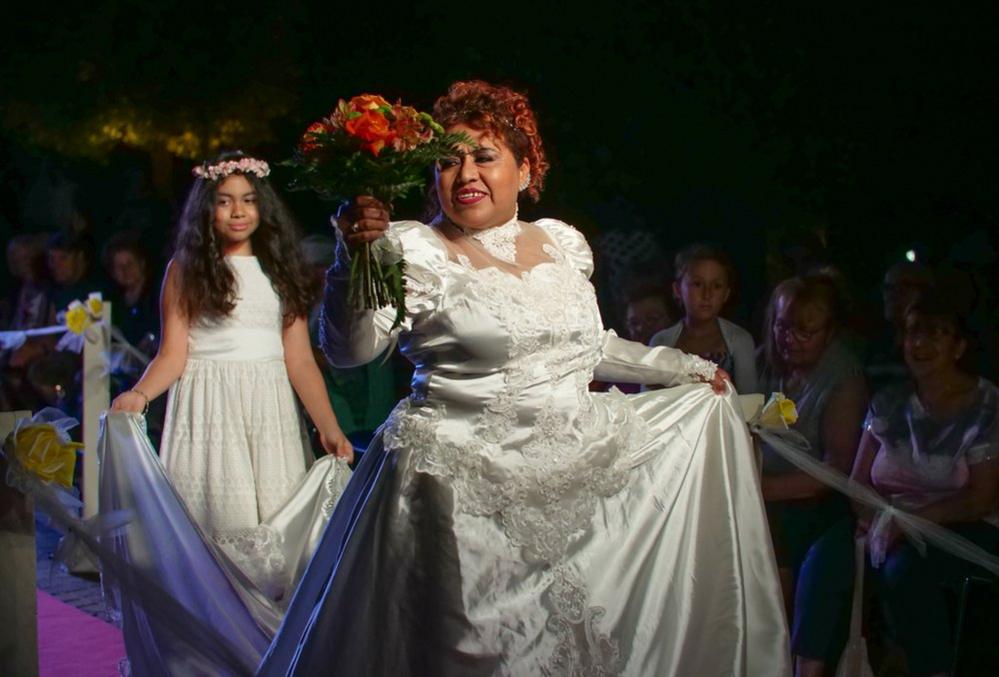

In the village of Pianoro, just outside the city of Bologna, locals have been embracing their migrant communities through a traditional garment common to all nationalities, the wedding dress.
Seven years ago, a group of pensioners was sitting around a card table at their local social club, Centro Giusti, chatting away between games - the usual kinds of conversations, the ones that often begin with: "When I was younger," or "When my children were born," or "When I got married." And it was that last phrase that gave the club's recreation manager, Andreina Cavazza, an idea.
"We'd ask things like, 'When did you get married? Was it at the end of the War? Did you have a beautiful dress?' And the women would start talking, 'I didn't have one,' 'My mum saved up to buy me a skirt,' 'I had a fairytale dress.' So we said, 'Why don't you bring them here and we can show them?'"
And that's how Pianoro's annual bridal gown fashion show was born.

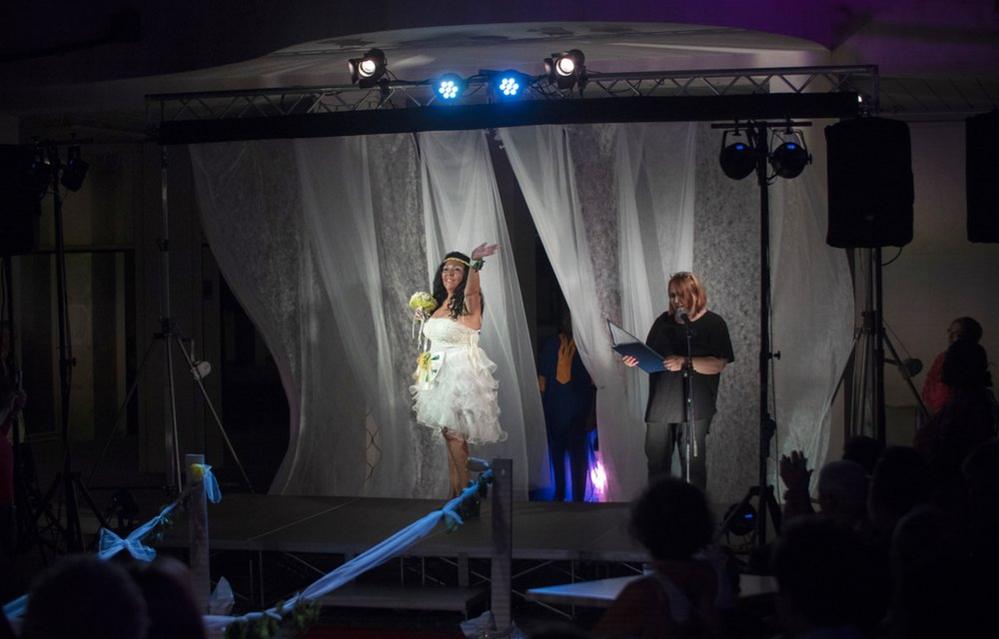
As each bride walks down the "aisle", Andreina reads a selection of facts and trivia from the year the wedding dress was worn. “It's a way of showing fragments of our history and how things have changed and evolved in a very short time,” she says.

"The first show was an in-house thing and we had problems finding people to wear the dresses," says Andreina, "so we got some local girls and care assistants who work with people here to do it."
The event was such a success that the municipal council offered to stage it annually in the main piazza, a few steps from the club.
And as more local women heard about it, they started bringing their own dresses for the show, sometimes even anonymously leaving them hanging on the centre's front door.

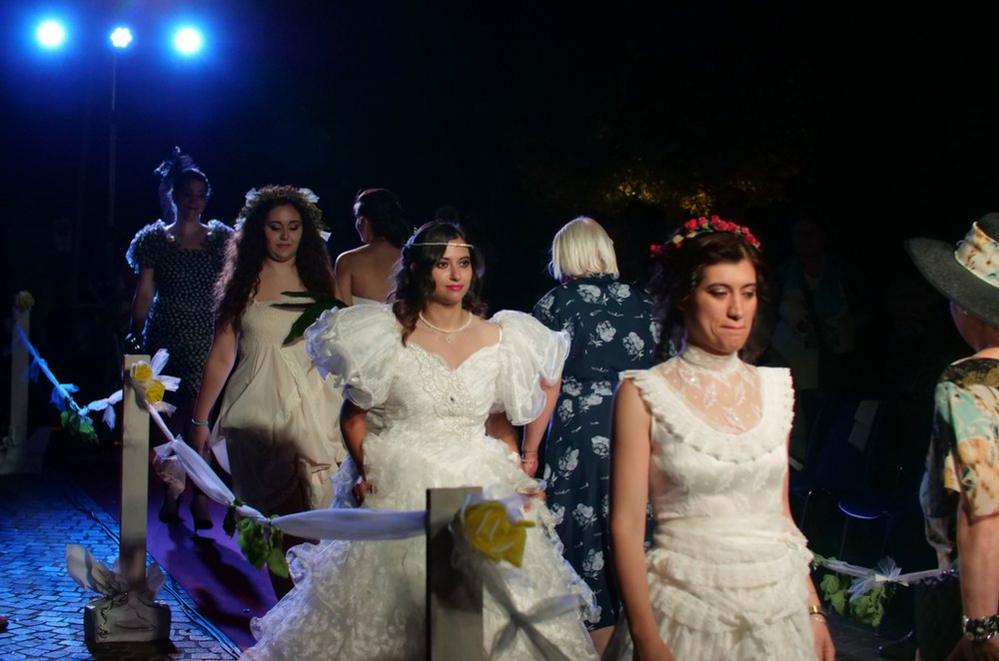

As Italian social clubs go, Centro Giusti is an unusual one - no membership fee, no political or religious leanings, open all day to locals of any age, sex and nationality.
Many of the people who come to Centro Giusti are migrant women and most have become Andreina's friends.
Patricia, from Ecuador, is a domiciliary carer for the elderly and disabled.
Lucia, from Brazil, serves afternoon tea during card games at the social club.
Shahzada, from Pakistan, is the go-to person for everyone's sartorial needs.
In Pianoro, roughly half the community care assistants come from other countries.

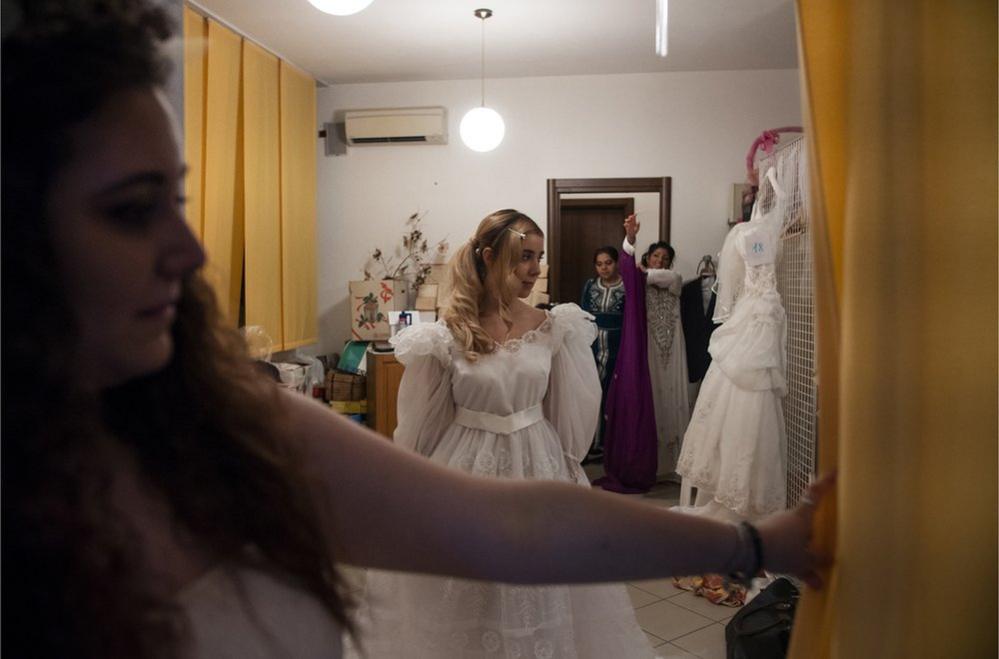
Sparkles and frills: Tonight, Centro Giusti's storage area is a bustling dressing room.

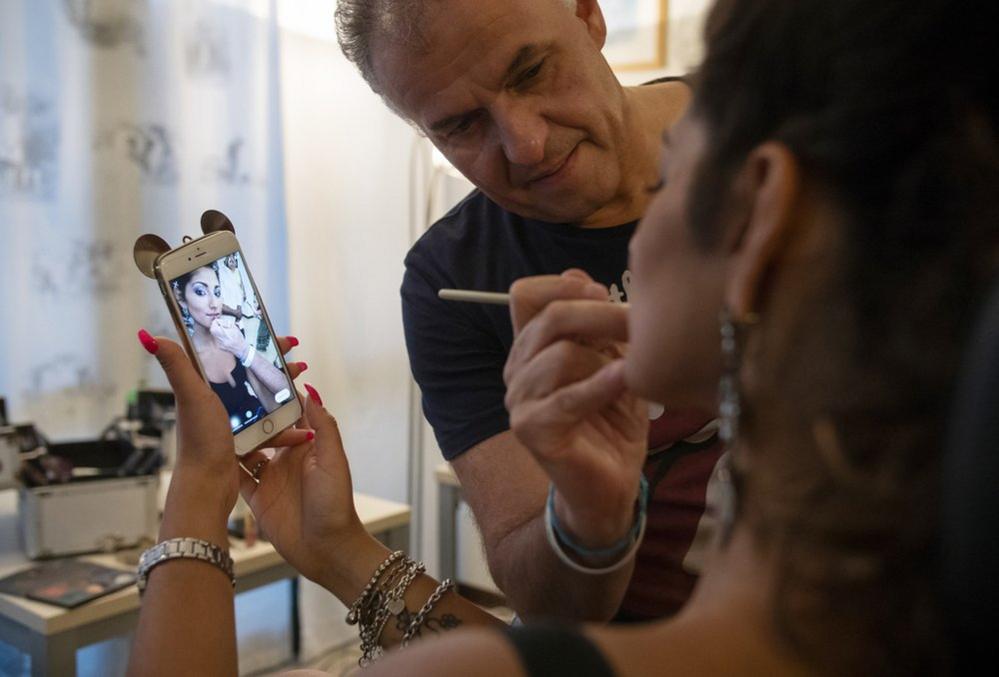
Card tables are pushed back in the main lounge to make way for hair and make-up.

As its popularity grew, Andreina understood the fashion show's social potential.
She had initially invited young migrant citizens to model the older ladies' dresses but later realised married women of other origins would be a rich source of beautiful and fascinating bridal gowns.
And so the annual event I Remember My Wedding Day was this year renamed Brides of the World.
"We're all women. We have the same dynamics. And we all remember our wedding day.
"There are those who had a beautiful dress and those who didn't, those whose marriages went well and those whose marriages went sour, those who got married twice, those who wanted to get married but didn't, and those who one day will get married.
"It's an emotional area we all have in common which deeply touches us all."


"This dress is from Saudi Arabia," says 19-year-old hairdresser Ramajana Bajramovic (centre). "A Moroccan lady who comes to this centre has a sister who works there and she sent her this dress for the show."

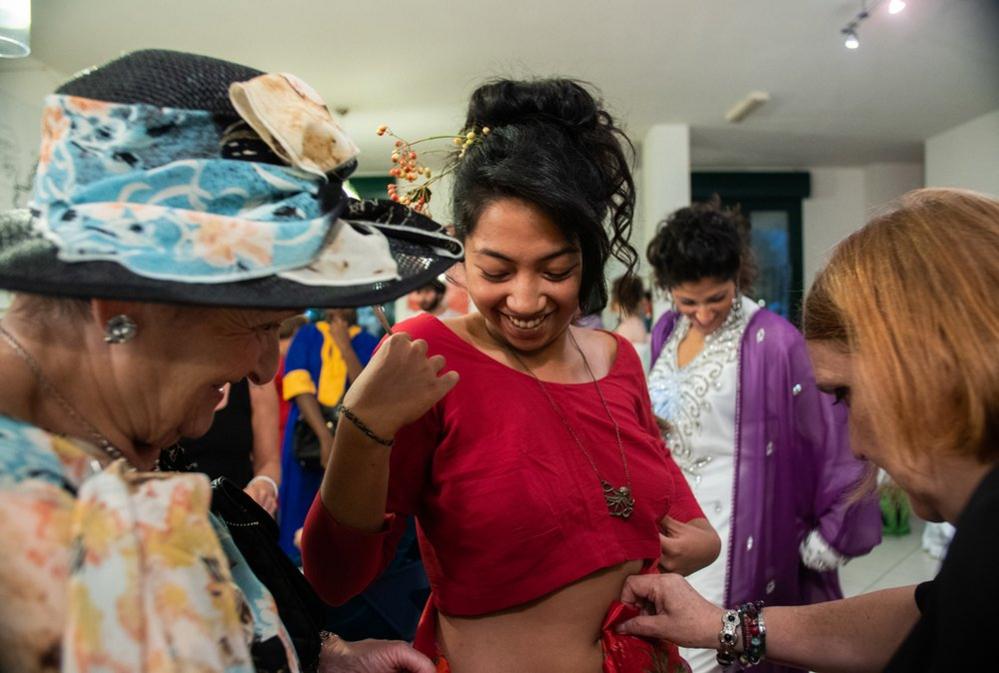
"I came to Pianoro for the first time yesterday to help make a documentary and interview Andreina," says Kathleen Ramirez, who is modelling a Nepalese dress. "It's very multicultural. There are girls wearing wedding dresses that aren't theirs. It really gives you a sense of belonging, even if I only arrived here in Pianoro yesterday."


"The Nepalese couple were on holiday this week, otherwise the bride would have modelled it herself," says Kathleen. "They got married at the foot of the Himalayas in a Buddhist temple."

Andreina's invitation to participate has been met with enthusiasm by women of all ages and origins. And she has become adept at talent-scouting models in the village streets too.
"I joke that it's lucky I'm not a man or I'd have been reported," she says, "because I take the liberty of going round the street, spotting a girl, looking her up and down from behind, and thinking, 'Mm, that dress would fit her perfectly.'"
Whether they are students or shop assistants, carers or council workers, teachers or stay-at-home mums, Andreina says, they invariably say yes "because they get it".
"They're all citizens of Pianoro - even those who normally have qualms because they're older or a bit overweight agree to take part."
The same cannot be said of Pianoro's men. They usually refuse to accompany the brides down the red-carpet aisle-come-catwalk running through the centre of the piazza.
Luckily, Andreina has three sons who are enlisted every year. "Only one is married but the other two play husbands and always have fun doing the show."

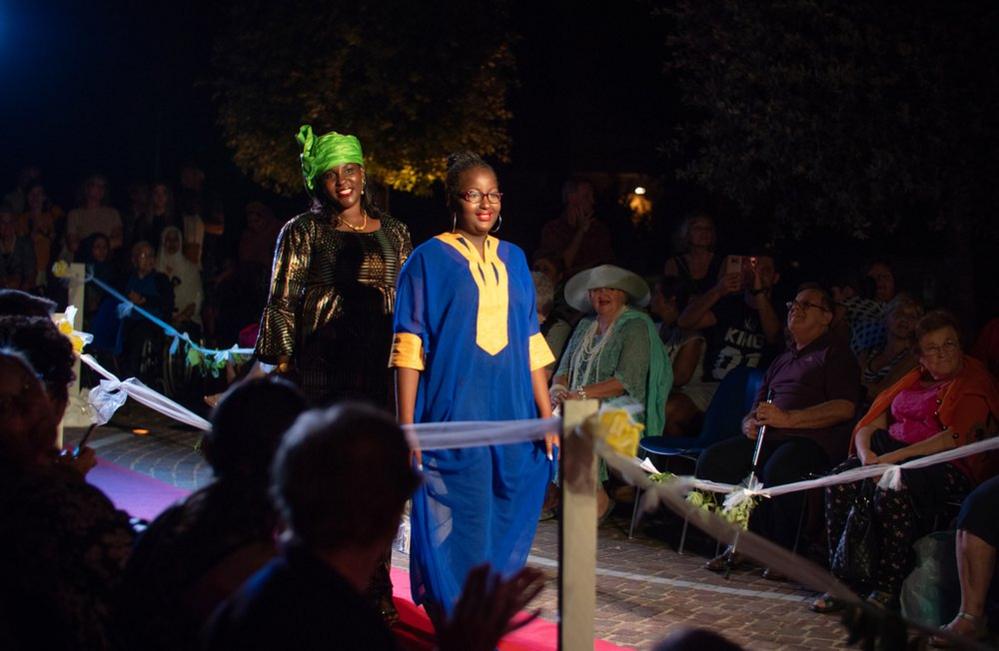
Originally from Senegal, Aminata (left) came to Pianoro 15 years ago. "I'm walking along the red carpet with one of my daughters, as my husband was too shy to do it," she says.

With more young married women involved in this year's show, many of the brides are modelling their own dresses, although none of the older ladies does.
"It's above all because they don't fit anymore," says Andreina, adding that there is, nevertheless, a lovely way for them to participate.
"They play the mothers, grandmas and aunties of the bride. They put on their best clothes and accompany them down the aisle."


The older ladies dress up in elegant outfits to accompany the brides down the red carpet.

Pianoro's deputy mayor, Franca Filippini, got married at the town hall in Bologna in 1990. She jokes that two children and 20kg on, she had to graciously allow someone else to model her wedding outfit the year before last. "But it was really moving and exciting to see it on the red carpet. I took photos. My husband found it emotional too."
Locals love the event, she says, and people of all ages come to watch. "Our little piazza really fills up. This is very important because it's a way of celebrating all together."


"This is my dress," says Maribel Quintero. "It has a really long trail. I tried on lots but this one was perfect. It fitted me like a glove. When I put it on I got all emotional because suddenly I saw myself as a real bride."

Of course, there's always going to be someone who disapproves, says Andreina.
The poster for Brides of the World bears the subtitle "Sharing and welcoming", which she confesses was added as a slight provocation to "the less open-minded" members of the community.
"'Sharing' because we share this moment which is the same for everyone and 'welcoming' because we want this concept to be the cornerstone of our community."
But she shies away from the word "integration".
"'Integration' means, 'You have to integrate with us.' I prefer to say, 'We live together.' We live together peacefully, fully respecting each other's traditions and beliefs. This event reflects that."
All photographs by Marco Mensa/Ethnos.